4 Ways How To Use Rescue Club
Golf tips
Rescue or Utility club is probably the most misunderstood club you can own. Give it a chance and discover it might be the most useful club in your bag.
In 1935, Gene Sarazen, one of the greatest players of the time, realized how adding extra metal on the bottom and back of the club, and increasing the loft helped the club bounce through the sand making bunker play easier. This is how he created the sand wedge, which has been a standard part of every golfer’s set since that time. From this time, club development has been about improving the quality of each of the clubs, bigger heads, better quality shafts, and positioning the weight differently in iron heads to make the ball fly higher and longer etc. However, there have been no new types of clubs that have stuck, until the Rescue / Utility club came along. The rescue club is not an iron; it is not a wood; it is somewhere in the middle. If you know how, you can play a wide variety of shots with it, and make those scary long iron shots from the fairway or on long par 3’s a lot easier.
I am a believer that nearly every level of golfer can benefit from having a rescue club in their bag, so over a serious of articles I will explain how to use it in 4 different situations. However, don’t let me limit your imagination. The rescue club is still a baby in its life, and I’m sure there are more different types of shots you can develop which no one has thought of yet. Leave your long irons at home and watch your score drop!
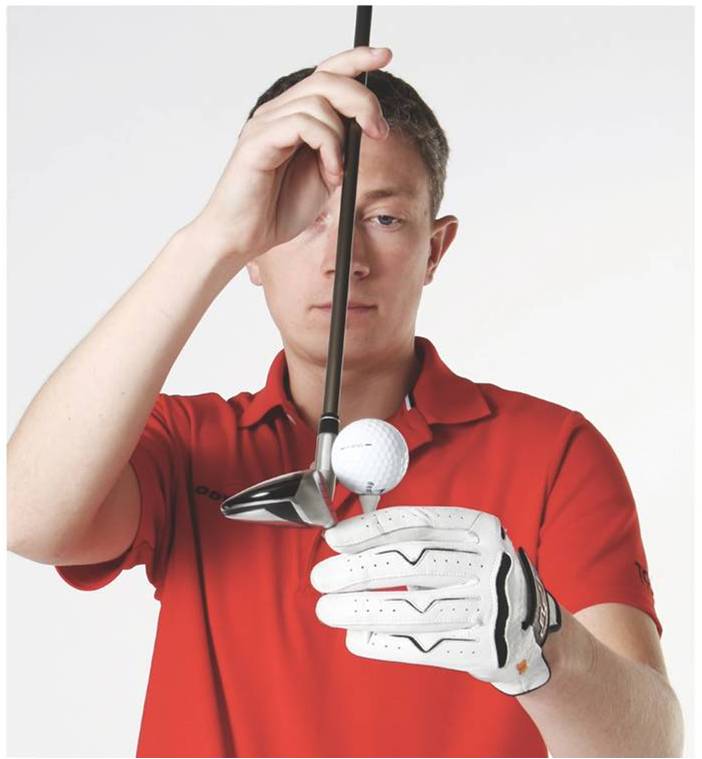 No. 1: Play it like a Driver
No. 1: Play it like a Driver
Most courses we play will have at least one par 4 where it is short but very tight. Perhaps, it might be OB on either side of the hole, or serve bunkers, or long grass. On this type of hole, the reward is for keeping the ball on the short grass, not long distance, making the rescue club the prefect club for the job.
How to play
Play the shot like it is your driver, taking the same address position.
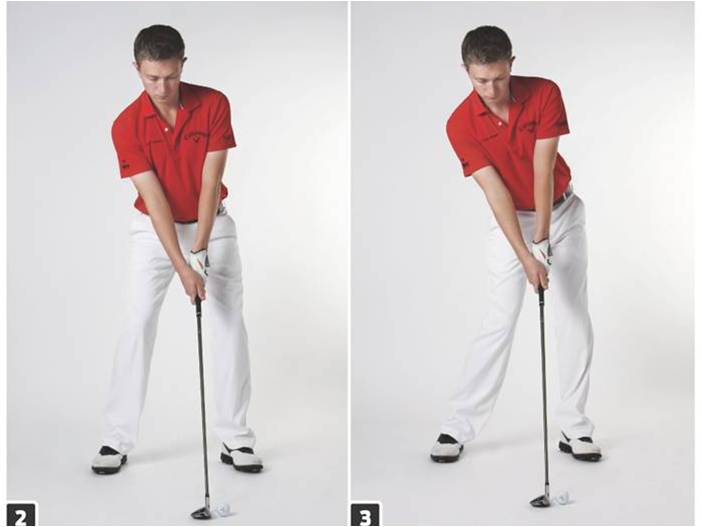 The tee height should leave ½ the ball above the clubface when the club is on the ground.
The tee height should leave ½ the ball above the clubface when the club is on the ground.- Ball position in line with the left heel
- Your stance should be the same width as your driver – wider than you shoulders.
- Weight 60:40 right foot with your spine angled slightly away from target.
- This set up position will create an ascending impact position, helping to maximize distance.
- There should be no divot.
No. 2: Play it like a fairway wood
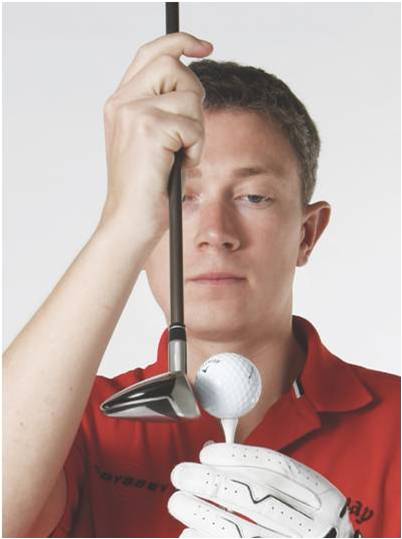 Again, with the modern golf courses, par 3’s seem to be getting longer and longer with more hazards around the front of the green. I do not think anyone likes the long iron par 3 over bunkers or water! Even when you hit a good shot, the ball tends to land on the green and run over the back, as it is very difficult to hit a long iron high enough to get the ball to stop. The rescue club has more weight at the bottom of the club with a bigger head than a long iron; this makes achieving solid contact and creating a higher ball flight much easier.
Again, with the modern golf courses, par 3’s seem to be getting longer and longer with more hazards around the front of the green. I do not think anyone likes the long iron par 3 over bunkers or water! Even when you hit a good shot, the ball tends to land on the green and run over the back, as it is very difficult to hit a long iron high enough to get the ball to stop. The rescue club has more weight at the bottom of the club with a bigger head than a long iron; this makes achieving solid contact and creating a higher ball flight much easier.
How to play
Play the shot as if it were a fairway wood.
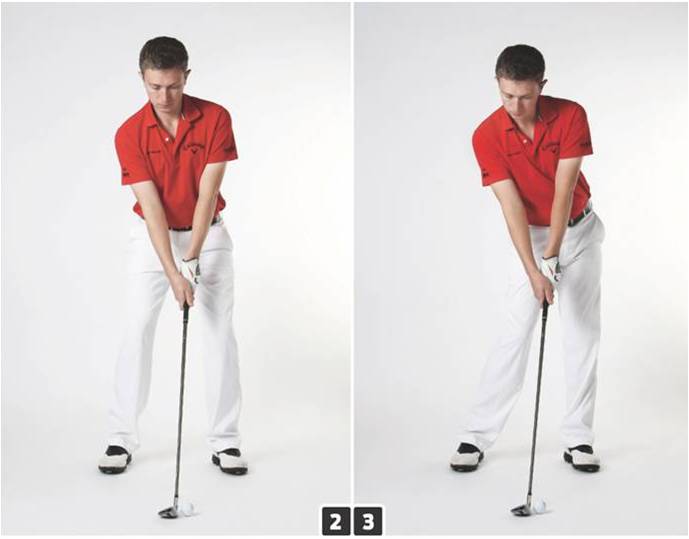 The tee height can be a little lower than when you play from a par 4.
The tee height can be a little lower than when you play from a par 4.- The ball position should be the same as a fairway wood – just inside your left heel.
- The weight should be 50:50 with very little spine angle away from target.
- Your stance width should be slightly narrower than that of the driver set up.
- This address position will create an impact very similar to a fairway wood, sweeping the ball off the tee peg. You will not hit down on the ball or up on the ball.
- If a rescue is too much club, and you think it will go over the green, try gripping shorter on the club to reduce the distance. You can do this by up to 2 inches.
No. 3: Play it like a Iron
For most, a rescue club is much easier to play than a long iron, from the fairway. As I said before, the nature of the design is such that making solid contact with a good ball flight is much easier. It’s not that hitting the sweep spot is easier; it is that your miss hits will not be as bad as with a long iron.
How to play
Play the shot as if you where using an iron.
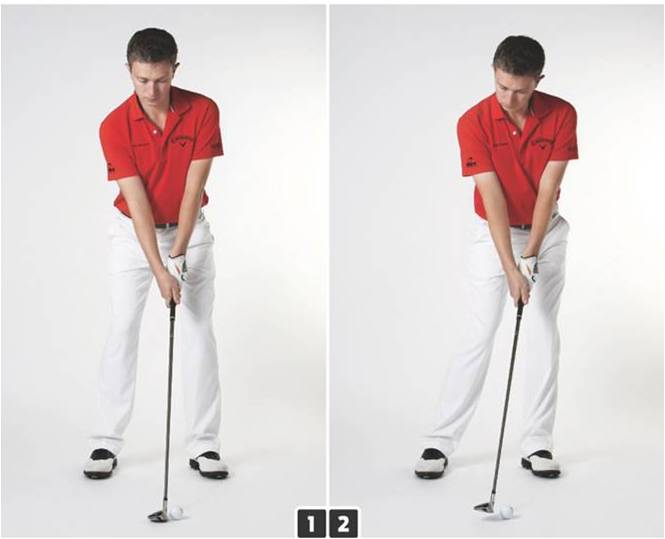 The ball position should be the same as a mid to long iron – one club head inside your left heel. See http://swingstation.com/golf-swing-basics-part-2/
The ball position should be the same as a mid to long iron – one club head inside your left heel. See http://swingstation.com/golf-swing-basics-part-2/- The weight position should be 50:50 with very little spine angle away from target.
- Your stance should be the same as a mid to long iron – about shoulder width.
- This address should help you swing the same as an iron. There should be a slight descending strike at impact with a small divot.
- Again, if you think a rescue might be too much club, try gripping down the club a little to reduce the distance.
No. 4: Play it like you Putter (Chipping)
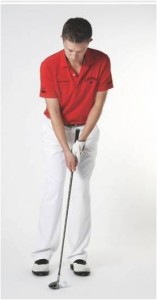 Since the sand wedge was invented in 1935, there have been no new types of clubs designed that have really stuck. There have been a few clubs that came close, one of those being a CHIPPER; it is basically a putter with loft added for anyone who struggles with their chipping, making solid impact, chipping yips, and getting nervous around the green. With the chipper, you make your putting stroke from off the edge of the green, but with the loft on the club the ball would lift in the air slightly, landing on the green, running out to the hole – a very simple effective shot. You can still buy them, but they are rare and never really became a standard part of most golfers’ sets. The reason is you only get to carry 14 clubs in your set, and using one of them for only one type of shot, a chip & run, is simply not worth it for most players. The good news is you can use a rescue for the same purpose!
Since the sand wedge was invented in 1935, there have been no new types of clubs designed that have really stuck. There have been a few clubs that came close, one of those being a CHIPPER; it is basically a putter with loft added for anyone who struggles with their chipping, making solid impact, chipping yips, and getting nervous around the green. With the chipper, you make your putting stroke from off the edge of the green, but with the loft on the club the ball would lift in the air slightly, landing on the green, running out to the hole – a very simple effective shot. You can still buy them, but they are rare and never really became a standard part of most golfers’ sets. The reason is you only get to carry 14 clubs in your set, and using one of them for only one type of shot, a chip & run, is simply not worth it for most players. The good news is you can use a rescue for the same purpose!
How to play
Address the ball like you where playing a putter.
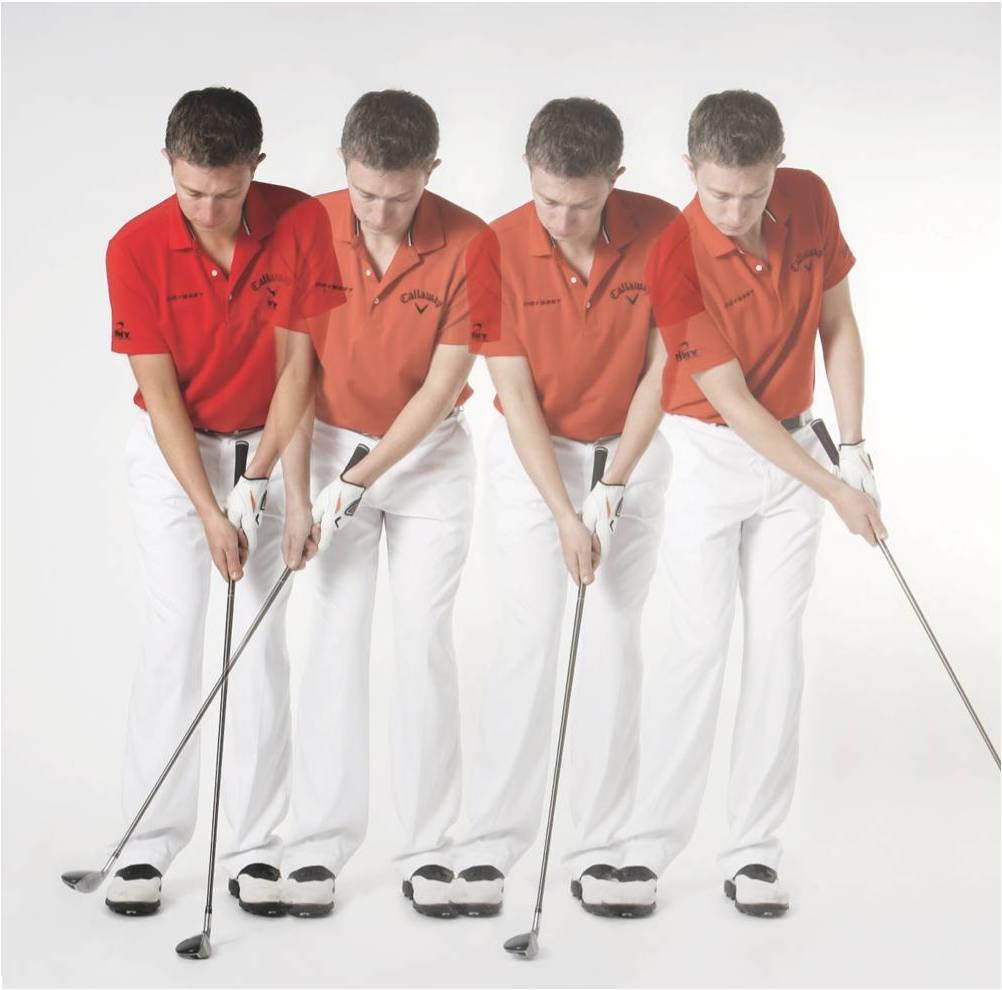 Grip as far down the club as possible, taking your putting grip.
Grip as far down the club as possible, taking your putting grip.- The ball position should be in the center of your stance.
- Stand closer to the ball, as you would with putting; the shaft of the club should be more vertical than normal.
- Your weight should be more to your left side to create a descending impact. This is the only difference to your putting address.
- Your width of stance should be the same as your putting address.
- Use your shoulders in the swing with very little hand movement. Again, the same as your putting stroke.

